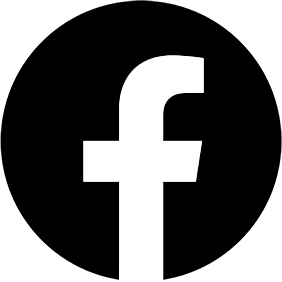本期要闻 Highlights of the Month
State of Council: Groundwater Management Regulation
《地下水管理条例》是我国第一部地下水管理的专门行政法规。
我国地下水开发利用程度不断加大,导致部分地区地下水超采和污染问题突出。为了加强地下水管理,水利部起草《条例》,从调查与规划、节约与保护、超采治理、污染防治、监督管理等方面做出规定。
《条例》首先完善了地下水节约与保护的各项措施。主要包括:一是实行地下水取水总量控制与水位控制制度。二是明确用水过程的节约要求。三是强化经济手段的运用。明确地下水水资源税费的征收原则。四是细化地下水保护措施。
为防治地下水污染,《条例》要求各地建立地下水污染防治重点区划定制度;衔接水污染和土壤污染防治法要求,强化对污染地下水行为的管控(第40条),明确特定行业防止地下水污染的措施(第41条)以及建立地下水监测制度等。
The “Groundwater Management Regulation” is the first Chinese special administrative regulation for groundwater management.
The continuous increase in the exploitation and utilization of groundwater in China has led to a prominent problem in groundwater over-exploitation and pollution in some regions. In order to strengthen groundwater management, the Ministry of Water Resources drafted the “Regulation” to regulate the groundwater resource investigation and planning, water conservation and protection, over-exploitation control, pollution prevention and control, as well as supervision and management.
“Regulation” proposes various measures for groundwater conservation and protection: (1) Control total amount of groundwater intake and water level; (2) define the water saving requirements during water using; (3) apply economic leverage and set out principles of tax confiscation on groundwater resources; (4) refine groundwater protection measures.
To prevent groundwater pollution, the “Regulation” requires a key area classification system for the prevention and control of groundwater pollution to be established; connects the Water Pollution and Soil Pollution Prevention and Control Laws to reinforce the groundwater pollution control (Article 40); specifies industrial wise groundwater pollution prevention measures (Article 41) and establishes the groundwater monitoring system.
最新国家法律法规 New Regulations
Ministry of Ecology and Environment: Hazardous Waste Transfer Management Measures
相比现行《转移联单办法》,明确了移出人、托运人、承运人、接受人各方责任,细化了从移出到接受各环节的转移要求,已经不单是针对转移联单申领运行管理的规定。新办法规定危险废物转移应通过国家危险废物信息管理系统运行电子联单,要求危险废物电子转移联单数据应当在信息系统中至少保存十年,同时明确了移出人申请跨省转移危险废物条件。
The new “Measures” is revised on the current “Hazardous Waste Transfer Manifest Management Measures”. The new Measures clarifies the responsibilities of the transferor, the shipper, the carrier and the receiver, and refines the transfer requirements from transfer to acceptance, not only on the operation management of transfer manifest. The new Measures stipulates that the transfer of hazardous waste shall run the electronic form through the national hazardous waste information platform, and the data shall be kept in the information system for at least ten years. It also clarifies the conditions for the transferor to apply for trans-provincial transfer of hazardous waste.
生态环境部:关于实施“三线一单”生态环境分区管控的指导意见(试行)
Ministry of Ecology and Environment: Guiding Opinions on the Implementation of Ecological and Environmental Zoning Management and Control of “Three Lines and One List” (Trial)
意见结合地方实践,明确了“三线一单”(生态保护红线、环境质量底线、资源利用上线和生态环境准入清单)生态环境分区管控更新调整、跟踪评估、共享共用等各环节的管理要求。
在实施与应用方面,特别强调加强“三线一单”生态环境分区管控在政策制定、园区管理等方面的应用,从源头上预防环境污染,从布局上降低环境风险。提出了在优化生态环境保护空间格局、服务高质量发展、推进高水平保护、协同推动减污降碳、强化“两高”行业源头管控的基本要求。
The Guiding Opinions clarifies the management requirements of “Three Lines and One List” (Ecological Protection Red Line, Environmental Quality Bottom Line, Resource Utilization Upper Line and Environmental Access Negative List), including updates and adjustments, tracking and evaluation, and sharing and publicity etc.
To facilitate the application of “Three Lines and One List”, Opinions emphasize the application in policy formulation, industrial park management to prevent environmental pollution from the sources and reduce the environmental risks. The Opinion put forward the basic requirements for optimizing the spatial layout, high-quality service development, coordinating pollution reduction with carbon reduction, and strengthening of the source control of the” high pollution and high energy consumption” industries.
国家发展改革委等部门:关于发布《高耗能行业重点领域能效标杆水平和基准水平(2021年版)》的通知
National Development and Reform Commission: Notice on Issuing Benchmark Level and Baseline Level of Energy Efficiency in Key Areas of High Energy-Consuming Industries (2021 Edition)
《通知》对标国内外生产企业先进能效水平,参考国家现行单位产品能耗限额标准的先进值和准入值、限定值,科学划定各行业重点领域能效标杆水平和基准水平,为加强高耗能行业“两高”项目管理,引导企业实施节能降碳改造提供了重要依据。
通知列明了5大类、10中类20小类高耗能行业重点领域能效基准和标准水平。高耗能行业重点领域包括原油加工及石油制品制造、炼焦、煤制液体燃料生产、无机碱制造、磷肥制造,水泥制造、平板玻璃制造、建筑陶瓷制品制造、卫生陶瓷制品制造、炼铁、炼钢、铁合金冶炼、铜冶炼、铅锌冶炼等20个行业小类。
限期分批实施改造升级和淘汰。对需开展技术改造的项目,各地要明确改造升级和淘汰时限(一般不超过3年)以及年度改造淘汰计划;对于不能按期改造完毕的项目进行淘汰。对于能效低于本行业基准水平且未能按期改造升级的项目,限制用能。
The Notice benchmarks the advanced energy efficiency levels of domestic and international production companies, takes reference of the advanced values, access values, and restrict values of the current national energy consumption quota standards per unit of product, and delineates the energy efficiency benchmark levels and baseline levels in key industries, which will be the important basis in project management for the “High Pollution and High Energy Consumption”, and guiding enterprises to implement energy-saving and carbon-reducing transformations.
The Notice lists the energy efficiency benchmarks and baseline levels in five key main industries with10 medium categories and 20 sub-categories. The key industries include crude oil processing and petroleum product manufacturing, coking, coal-based liquid fuel production, inorganic alkali manufacturing, phosphate fertilizer manufacturing, cement manufacturing, flat glass manufacturing, building ceramic product manufacturing, sanitary ceramic product manufacturing, ironmaking, and steel refining, ferroalloy smelting, copper smelting, lead-zinc smelting and so on.
The Notice requires entities to implement transformation, upgrading and phase out in batches within a time limit. For the projects that requires technological transformation, local governments must define the timeline for transformation, upgrading and phase out (generally no more than 3 years) and the annual transformation and phase out plan. Projects that cannot be upgraded on time shall be phased out. Projects whose energy efficiency is lower than the industrial benchmark level and fail to be retrofitted and upgraded on schedule, energy consumption will be restricted.
Announcement of the State Administration for Market Regulation on Matters Concerning the Administrative Licensing of Special Equipment
公告对2019年发布的《特种设备生产单位许可目录》《特种设备作业人员资格认定分类与项目》《特种设备检验检测人员资格认定项目》进行了修订和调整,同时,新制定了《特种设备检验、检测机构核准项目》
新修订的《特种设备生产单位许可目录》中,新增“可以从事压力容器、压力管道安装的生产单位资质规定”,规定了持有锅炉安装许可证、压力容器制造许可证和压力管道安装许可证的企业可从事特种设备安装的级别规定。《特种设备作业人员资格认定分类与项目》没有变化。
The Announcement revises and adjusts the “List of Licensing for Special Equipment Producers”, the “Classification and Items of the Qualification of Special Equipment Operators”, the “Items of the Qualification of Special Equipment Inspectors and Testers” released in 2019, and newly formulates the “Approval Items of Special Equipment Inspection and Testing Institutions.”
In the newly revised “List of Licensing for Special Equipment Producers”, the “Provisions on the Qualification of Production Units that can be Engaged in the Installation of Pressure Vessels and Pressure Pipelines” is added, which stipulate the installation of special equipment level that enterprises could engage while holding boiler installation license, pressure vessel manufacturing license and pressure pipeline installation license. Meanwhile, “Classification and Items of the Qualification of Special Equipment Operators” witnesses no change.
Notice on Issuing the Classification Catalogue of Medical Waste (2021 Edition)
修订后的《目录》延续了原有的五个类别和特征,增加了分类的管理要求、收集方式、满足相应条件下的豁免管理等内容。
附表1《医疗废物分类目录》中,对感染性废物、损伤性废物、病理性废物、药物性废物及化学性废物五类常见组分或废物名称进行了归类与细化,新增了收集方式,进一步明确了医疗废物的盛装方法和收集管理要求。附表2《医疗废物豁免管理清单》中,规定了部分无风险或风险较低的医疗废物,在满足相应条件时可以按照豁免内容的规定实行豁免管理。
The revised Catalogue extends the original five categories and characteristics, and adds classification management requirements, collection methods and exemption management under corresponding conditions.
Annex 1 “Classification Catalogue of Medical Waste” classifies and refines the five common components or waste names including infectious waste, traumatic waste, pathological waste, pharmaceutical waste and chemical waste, adds the collection method of medical wastes and further specifies the storage method and collection management requirements of medical waste. Annex 2 “Medical Waste Exemption Management List” stipulates that some non-risk or low-risk medical wastes can be exempted in accordance with the provisions of the exemption content when the corresponding conditions are met.
最新国家标准New National Standards
HJ 1200-2021排污许可证申请与核发技术规范 工业固体废物(试行)
HJ 1200-2021 Technical Specification for Application and Issuance of Pollutant Permit—Industrial Solid Waste (On Trial)
HJ 1209—2021工业企业土壤和地下水自行监测 技术指南
HJ 1209—2021 Technical guidelines of soil and groundwater self-monitoring for industrial enterprises
立法草案 Policy Initiatives & Developments
生态环境部:关于进一步加强重金属污染防控的意见(征求意见稿)
Ministry of Ecology and Environment: Opinions on Further Strengthening the Prevention and Control of Heavy Metal Pollution (Draft for Consultation)
《意见》提出进一步强化重金属污染防控的主要目标:到2025年,重点行业产业结构进一步优化,全国重点行业重点重金属污染物排放量比 2020 年下降5%以上。
提出了重金属污染防控重点,包括重点重金属污染物、重点行业和重点区域。重点重金属污染物包括铅、汞、镉、铬、砷和铊。重点行业包括重有色金属矿(含伴生矿)采选业、重有色金属冶炼业(含再生冶炼)、铅蓄电池制造业、电镀行业、化学原料及化学制品制造业(电石法聚氯乙烯制造、铬盐制造、以工业固废为原料的锌无机化合物工业)、皮革鞣制加工业等6个行业。
《意见》提出进一步强化重金属污染防控的主要任务:严格准入,优化涉重金属产业结构和布局;分级分类,持续推进重金属污染物减排;系统治污,加强涉重金属行业环境治理;加大力度,有序推进涉重金属历史遗留问题治理;健全制度,加强重金属监管执法等。
The Opinions defines the main goal of the heavy metal pollution prevention and control: by 2025, further optimizing the industrial structure of key industries, and key heavy metal pollutants discharge in key industries shall be reduced by more than 5% compared with 2020.
The Opinions proposes the focus of heavy metal pollution prevention and control will be on key heavy metal pollutants, key industries and key regions. Key heavy metal pollutants include lead, mercury, cadmium, chromium, arsenic and thallium. Key industries are 6 industries including heavy non-ferrous metal mines (including associated minerals) mining and dressing, heavy non-ferrous metal smelting (including recycling smelting), lead storage battery manufacturing, electroplating industry, chemical raw materials and chemical products manufacturing (including calcium carbide method PVC manufacturing, chromium salt manufacturing, and zinc inorganic compound industry using industrial solid waste as raw materials) and leather tanning and processing industry.
The Opinions proposes the main tasks: applying stricter environmental access and optimizing the industrial structure and layout of heavy metal related industries; continuously promoting the pollutant reduction of heavy metal through differentiating grading and classification system; strengthening environmental treatment of heavy metal in a systematic approach; promoting the treatment of legacy problems related to heavy metals; reinforcing the supervision and enforcement on heavy metal pollution.
最新地方性法规 Regional Updates
上海市:上海市重点行业企业挥发性有机物综合治理工作推进细化方案
Shanghai Municipality: Detailed Plan to Promote Volatile Organic Compounds (VOCs) Comprehensive Control in Key Industries in Shanghai.
为加快推进落实上海VOC2.0行动方案,即《关于开展本市重点行业挥发性有机物综合治理工作的通知》(沪环气〔2020〕41号)和《上海市重点行业企业挥发性有机物深化治理项目专项扶持办法》(沪环规〔2021〕13号)要求,细化方案进一步明确本市重点行业企业挥发性有机物(VOCs)综合治理推进要求,要求到2022年底全面完成VOCs治理项目和与之相匹配的VOCs治理任务,并按照《上海市重点行业企业挥发性有机物深化治理项目减排量核算技术指南(试行)》(沪环气〔2021〕239号)进行VOCs减排量核算,作为后续申请验收以及VOCs减排补贴的基础。
In order to accelerate the implementation of the Shanghai VOC 2.0 program, which was stipulated in the “Notice on Carrying out the VOCs Comprehensive Control in Key Industries in Shanghai Municipality” (Hu Huan Qi [2020] No.41) and the “Special Support Fund Measures to Deepen VOC Treatment Projects of Key Industry Enterprises in Shanghai Municipality” (Hu Huan Gui [2021] No.13) , the Detailed Plan further clarifies the requirements for VOC2.0 program and requires entities to complete the VOCs treatment projects and the corresponding tasks by the end of 2022 and calculate VOCs emission reductions in accordance with the “Technical Guidance for Emission Reduction Accounting of VOCs Deepening Treatment Projects of Key Industry Enterprises in Shanghai (Trial) ”(Hu Huan Qi [2021] No. 239), as the basis for subsequent applications for acceptance and VOCs emission reduction subsidies.
Shanghai Municipality: the Revision of the “Regulations of Shanghai Municipality on Environmental Protection”
主要修改是对照《长江保护法》《固体废物污染环境防治法》等法律规定,增加了政府制定生态环境分区管控方案和准入清单的要求,完善了排污口新改扩监管、水上禁运以及长三角固废联防联控机制等内容,并对应修改了部分处罚条款。
Major revisions are to align with the “Yangtze River Protection Law” and the “Law on the Prevention and Control of Environment Pollution Caused by Solid Wastes”, the Regulations adds the requirements for the government to formulate the control measures and the access list of ecological environment zoning, improves the supervision of the new, upgrade and expansion of pollutant discharge outlets, water embargo and the joint waste prevention and control mechanism in the Yangtze River Delta, and revises the corresponding punishment provisions.







 沪公网安备31010602007801
沪公网安备31010602007801